elemintalshop
King Bhumibol of Thailand & Wat Phra Mahathat 25 Satang Authentic Coin Money for Jewelry and Craft Making (Buddhist Stupa)
King Bhumibol of Thailand & Wat Phra Mahathat 25 Satang Authentic Coin Money for Jewelry and Craft Making (Buddhist Stupa)
Couldn't load pickup availability
King Bhumibol & Wat Phra Mahathat Woramahawihan Thailand 25 Satang Authentic Coin Charm for Jewelry and Craft Making (Theravada Buddhist Stupa) (Buddha Tooth Relic)
Obverse: King Bhumibol Adulyadej (Rama IX) facing left
Lettering: ภูมิพลอดุลยเดช รัชกาลที่๙
Translation: Bhumibol Adulyadej Rama IX
Reverse: Stupa of Wat Phra Mahathat Woramahawihan, and the denomination below
Lettering: ประเทศไทย พ.ศ.๒๕๔๗
๒๕ สตางค์ 25
Translation: Thailand 2004
25 Satang 25
Features
Issuer Thailand
King Bhumibol Adulyadej (Rama IX) (1946-2016)
Type Standard circulation coin
Years 2530-2551 (1987-2008)
Calendar Thai
Value 25 Satang
0.25 THB = USD 0.0073
Currency Baht (1897-date)
Composition Aluminium-bronze (92% Copper, 6% Aluminum, 2% Nickel)
Weight 1.9 g
Diameter 16 mm
Thickness 1.34 mm
Shape Round
Technique Milled
Orientation Coin alignment ↑↓
Number N# 1642
References Y# 187
Wikipedia:
Bhumibol Adulyadej (Thai: ภูมิพลอดุลยเดช; RTGS: Phumiphon Adunyadet; pronounced [pʰūː.mí.pʰōn ʔā.dūn.jā.dèːt] (About this soundlisten); 5 December 1927 – 13 October 2016), conferred with the title King Bhumibol the Great in 1987 (officially conferred by King Vajiralongkorn in 2019), was the ninth monarch of Thailand from the Chakri dynasty, titled Rama IX. Reigning since 9 June 1946, he was the world's longest-reigning current head of state from the death of Emperor Hirohito of Japan in 1989 until his own death in 2016,[5] and is both the second-longest reigning monarch of all time and the longest-reigning monarch to have reigned only as an adult, reigning for 70 years and 126 days. During his reign, he was served by a total of 30 prime ministers beginning with Pridi Banomyong and ending with Prayut Chan-o-cha.
Forbes estimated Bhumibol's fortune – including property and investments managed by the Crown Property Bureau, a body that is neither private nor government-owned (assets managed by the Bureau were owned by the crown as an institution, not by the monarch as an individual)– to be US$30 billion in 2010, and he headed the magazine's list of the "world's richest royals" from 2008 to 2013 although the same magazine also estimated the worth of the British monarchy triple that of the Thai. In May 2014, Bhumibol's wealth was again listed as US$30 billion.
After a period of deteriorating health which left him hospitalized on several occasions, Bhumibol died on 13 October 2016 in Siriraj Hospital.[14] He was highly revered by the people in Thailand– some saw him as close to divine. Notable political activists and Thai citizens who criticized the king or the institution of monarchy were often forced into exile or to suffer frequent imprisonments. Yet many cases were dropped before being proceeded or were eventually given royal pardon. His cremation was held on 26 October 2017 at the royal crematorium at Sanam Luang. His son, Maha Vajiralongkorn, succeeded him as King.
********
Wikipedia:
Wat Phra Mahathat Woramahawihan (Thai: วัดพระมหาธาตุวรมหาวิหาร) is the main Buddhist temple (wat) of Nakhon Si Thammarat Province in southern Thailand. The main stupa of the temple, Phra Borommathat Chedi ('great noble relics stupa'), was built by King Sri Dhammasokaraja in the early-13th century CE to establish a symbol for the Theravada Buddhism sect in the province. The temple is believed to house a tooth of Gautama Buddha.
History
According to legend, Prince Thanakuman and Queen Hem Chala brought the relic of Buddha to Hat Sai Kaew and built a small pagoda in 291 CE. When King Si-Thamma Sokarat established the city of Nakhon Si Thammarat, he built a new temple called Wat Phra Borom That on the same site in the Mahayana-style of the ruling Srivijaya Kingdom. The city of Nakhon Si Thammarat was a prominent city in the ancient kingdom of Tambralinga. The city was a part of the Srivijaya empire till the early-13th century.
The main stupa
Historians believe that the city was almost emptied by epidemics and war, prompting the king to build a larger stupa in the Sri Lankan-style with public participation and thereby re-develop the town community. The other religious buildings were constructed between the 13th and 18th centuries including the Wihan-Bodhi Lanka, a roofed cloister around the bodhi tree which is believed to be a sprout of the Mahabodhi tree in the Mahabodhi Temple in Bodh Gaya, India.
The Thai name for the temple, Phra Mahathat Woramahawihan comes from Pali, vara maha dhatu vara maha vihara, literally meaning 'Great Noble Temple of the Great Noble Relics Stupa'. The stupa, which is bell shaped, is inspired from Sri Lankan Buddhist art reflecting the belief of Ashoka's transmission of the tradition of the stupa from India to Sri Lanka. The ruler of Nakhon Si Thammarat, who started work on the stupa called himself Sri Dhammasokaraja, which literally means 'Ashoka the great'. The name of the town Nakhon Si Thammarat, is also derived from Pali, Nagara Sri Dhammaraja, meaning 'town of Dhammaraja'.
The creation of the stupa led to Nakhon Si Thammarat becoming the centre of Thervada Buddhism. Inscriptions from the Sukhothai Kingdom, speak of the influence the city and the stupa had in spreading and strengthening Thervada Buddhism in the kingdom. The temple also received patronage from Ayutthaya Kingdom, which ruled over entire present day Thailand between the 14th and 17th centuries. The stupa and other religious edifices were built over 100 years after construction of the original stupa began. It underwent massive restoration works in 1612-1616, 1647, 1732-1758, 1769, 1895-1898, 1914, 1972-1974, 1987, 1994-1995 and in 2009. The temple was nominated to a tentative list of UNESCO World Heritage Sites list in 2012.
Architecture
The principal stupa, Phra Borommathat Chedi, is a bell-shaped stupa built in the early-13th century. The stupa is believed to contain the relics of Gautama Buddha, which marks it as one of the most important sites of Thervada Buddhism. The temple complex is built in a rectangular plan over 5.14 hectares and is enclosed by brick walls. There are four gates for access to the temple. The temple is divided into two zones similar to traditional Buddhist temples: the Buddha-avasa, the sacred area for religious activities and the Sangha-avasa, the residential area for the monks.
There are 22 sculpted standing elephants, covered in stucco surrounding the base of the stupa. The base is square with a low brick wall, for providing space for clockwise ambulation around the stupa by believers. There are four bell-shaped stupas surrounding the main stupa. The main stupa has an umbrella like spire formed with 52 rings, which is separated from the bell-shaped stupa by a row of walking Buddha images in relief. The 10.89-metre-high (35.7 ft) spire is covered with gold leaf weighing around 600 kilograms and studded with precious stones.
The principal stupa stands in a cloister covered with coloured tiles. It is surrounded by a gallery lined with numerous Buddha images, the oldest being a Sukhothai-style image of Buddha dating from the 13th-14th century CE. There are also 158 minor chedis (a Thai word for 'stupa') between the main stupa and cloister, housing ashes and bones of Buddhist devotees. The staircase leading to the stupa is guarded by demon giants in the form of yaks. The chapels (Wihan Khian and Wihan Phra Ma) have two stucco reliefs depicting scenes from the life of Buddha on its inner walls. There is a small cloister enclosing the Bodhi tree, outside which is the main assembly hall (Ubosot) called Wihan Luang. The assembly has columns leaning inwards in the Ayyuthaya-style. It was built between the 15th and 16th centuries CE and has a richly decorated ceiling.
There is also a chapel dedicated to Buddha's disciple Kaccayana. The temple complex also has a museum called Wihan Kien containing historical objects, including images of Buddha, auspicious objects and offerings. North of the ubosot is a mondop with a two-tiered roof, containing a Buddha footprint shrine. There are also two bronze statues depicting Tambralingan princes Jatukham and Ramanthep, which according to scholars also represent Hindu gods Kartikeya and Vishnu.
Culture
The principal stupa was built according to Theravada tradition. The 22 elephants surrounding the base of the stupa symbolise the 22 spiritual faculties (Indriya). The 52 rings on the spire represent the 52 mental factors (Cetasika). The eight statues of walking Buddha denote the Noble Eightfold Path leading to cessation of suffering leading to Arhatship, which is the highest doctrine of Buddhism. The relative size of the height and width of the principal bell-shaped stupa is 2:1 implying the complete integrity of corporeal and spiritual aspects.[citation needed] The height of the stupa is 28 wa and its width is 14 wa. The height of the stupa therefore represents the 28 corporeality aspects and the width represents the 14 functions of consciousness.[citation needed] The height of the entire stupa structure including the spire and the base is 78 metres.
The obverse of the 25 satang coin features an image of the Wat Phra Mahathat Woramahawihan. It is also a symbol of Nakhon Si Thammarat Province. Jatukam Ramathep amulets, consecrated in the temple are believed to act as lucky charms, drawing visitors from across the nation.
Hae Pha Khuen That (แห่ ผ้า ขึ้น ธาตุ) is the annual temple festival held on the occasion of Magha Puja, which is celebrated on the full moon day in February. The celebrations are marked by a procession with a robe, known as Phra Bot, joined in a single piece to wrap around the bell shaped body of the main stupa and the chedis. Traditionally white robes painted with scenes from the life of Buddha are used, but sometimes plain white, red, or yellow robes are also used. The festival is believed to have started in 1230 when the main stupa was completed.
Share
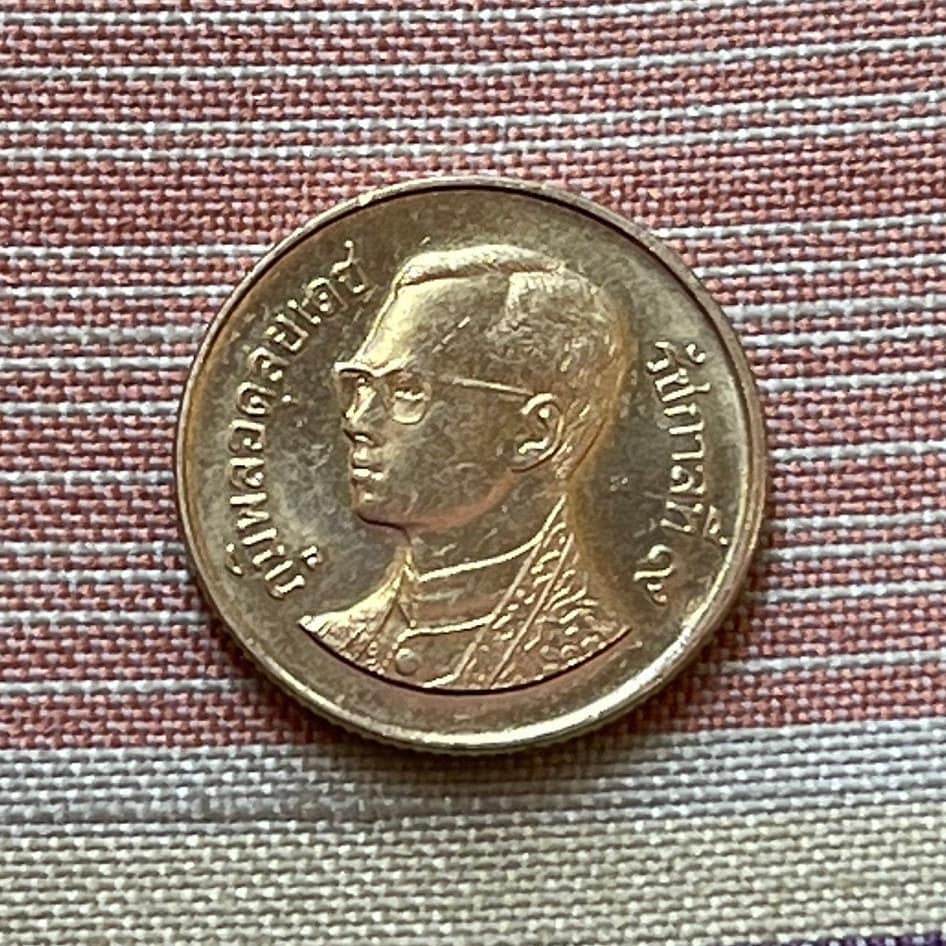
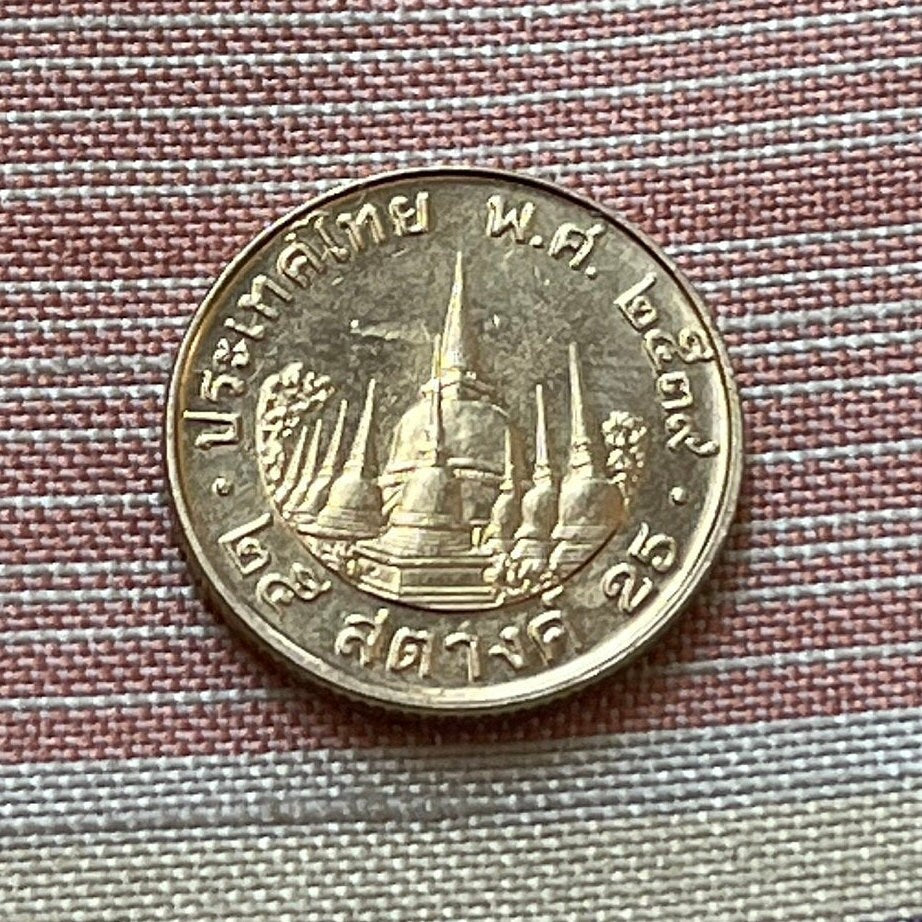
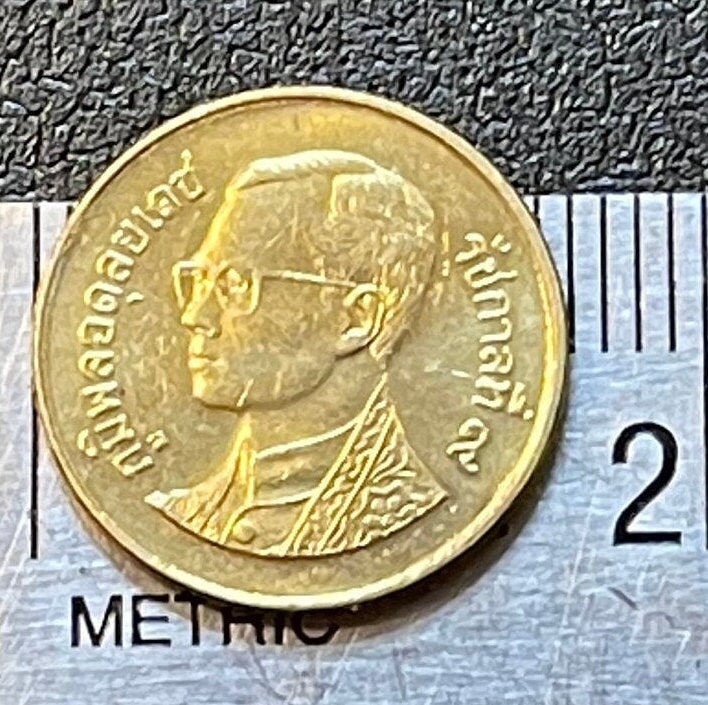
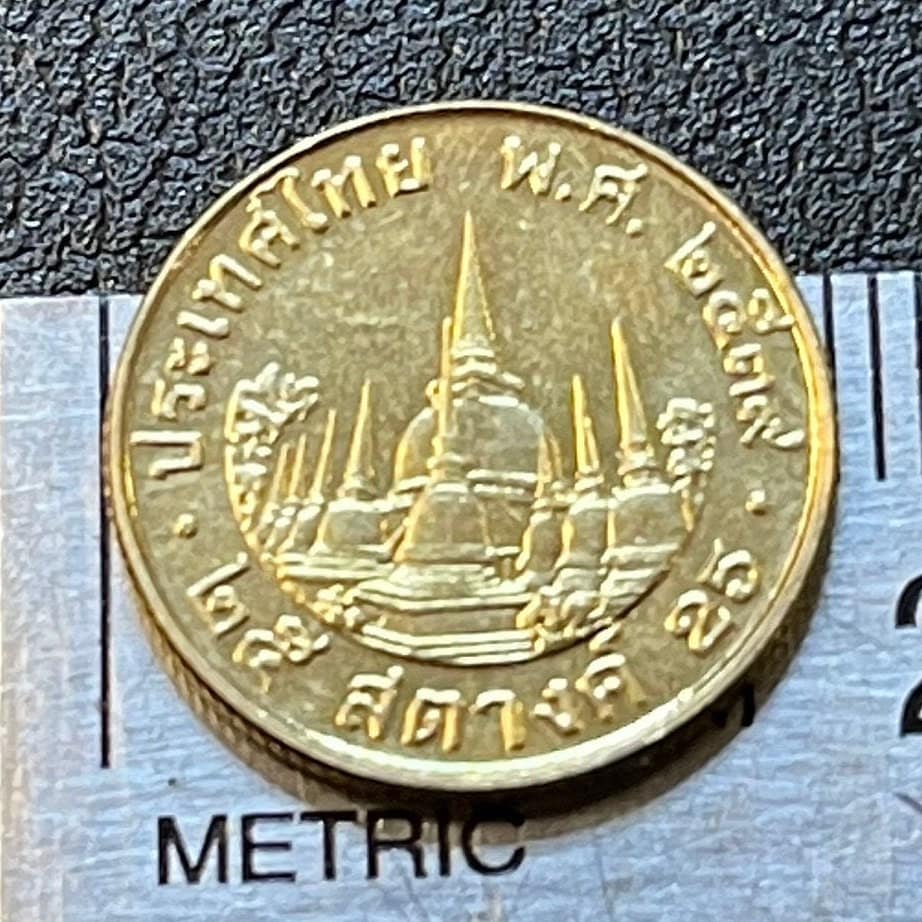
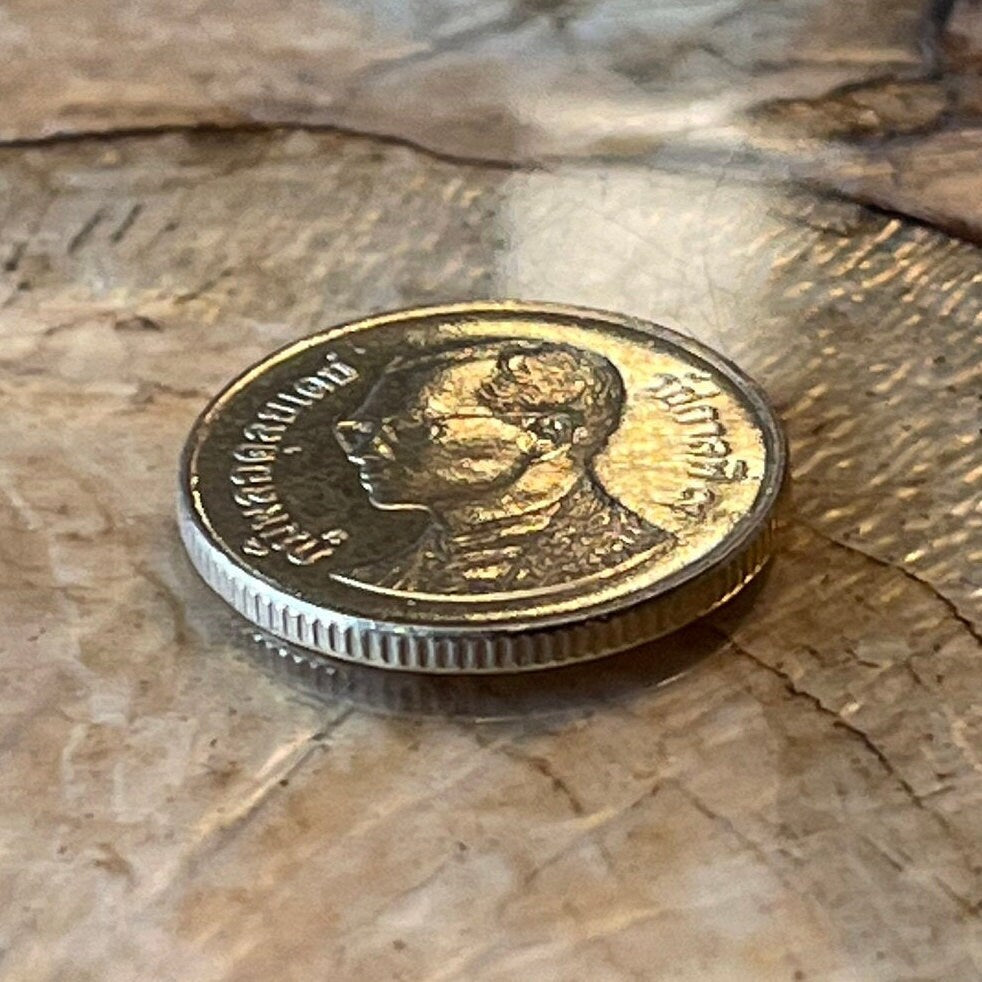
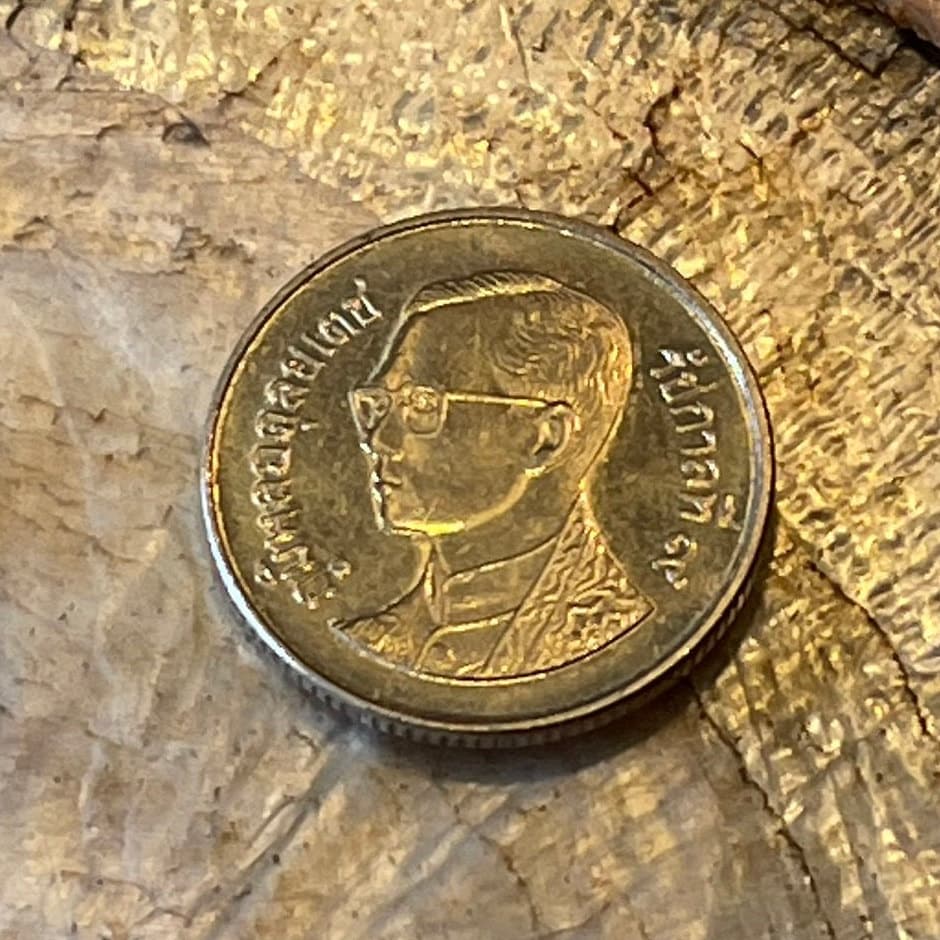
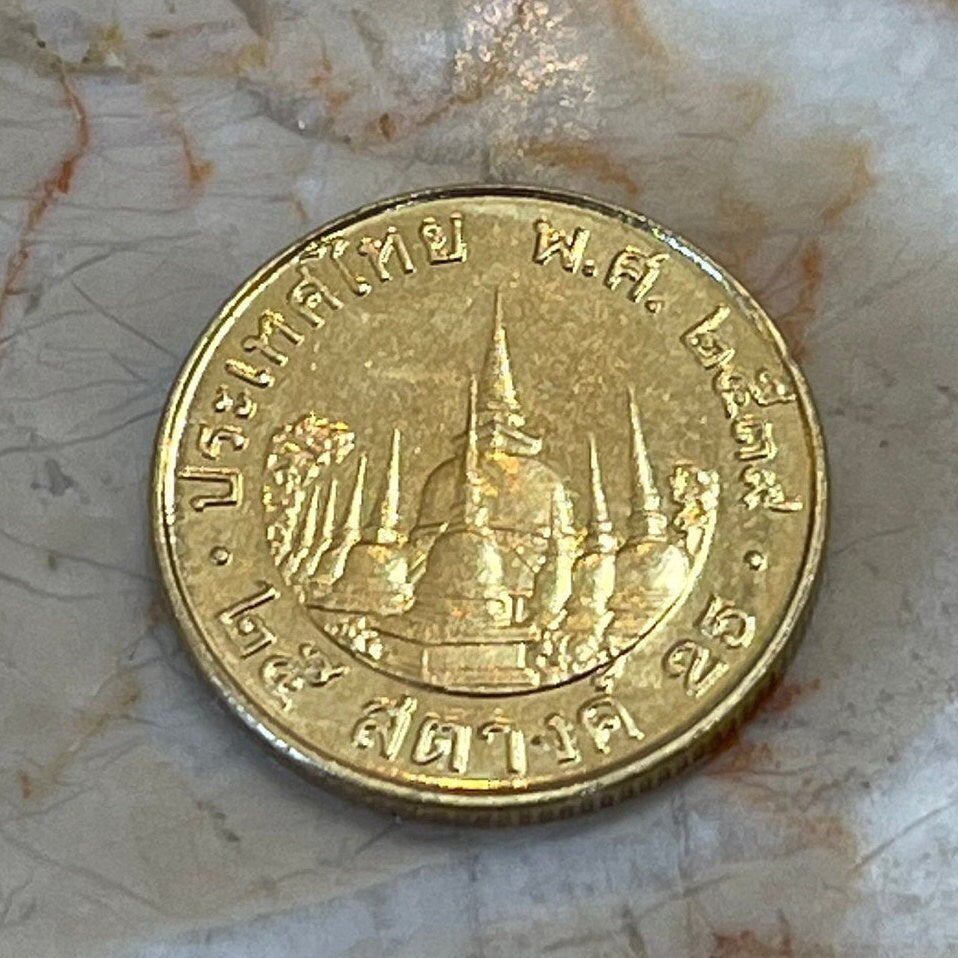
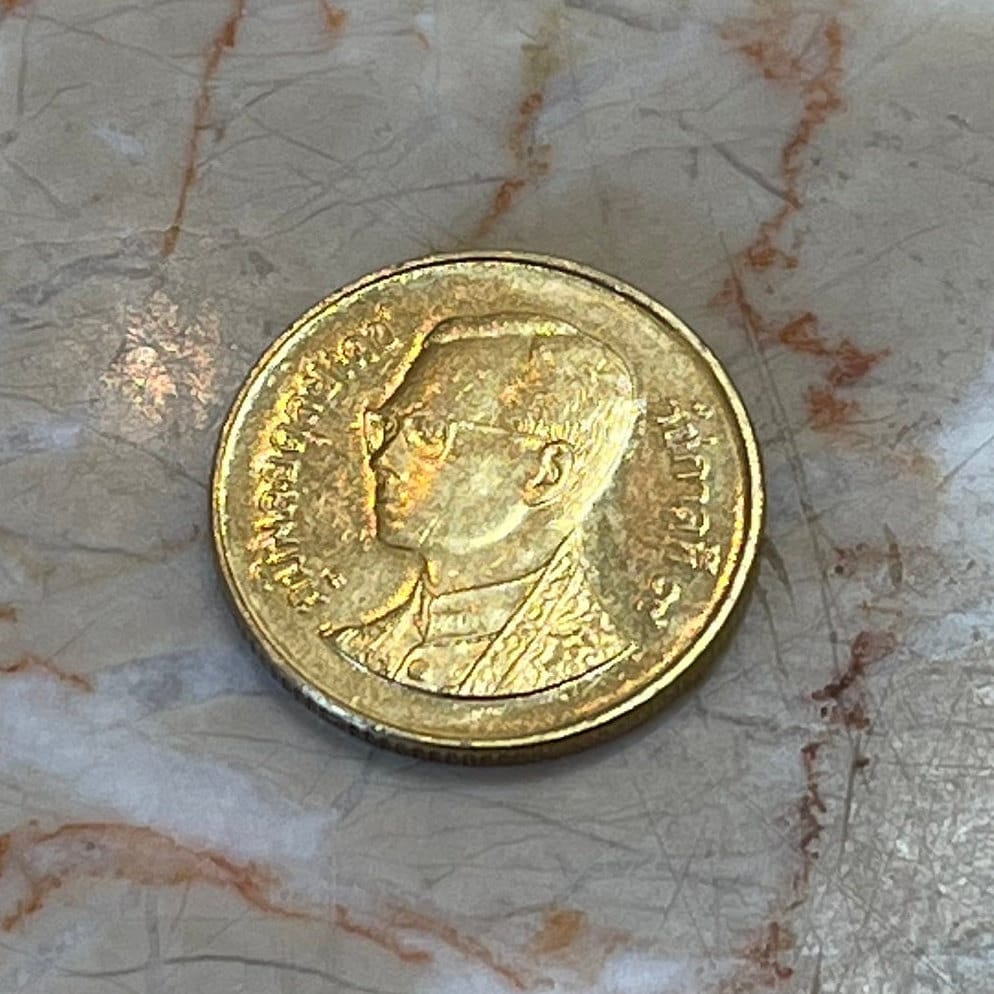
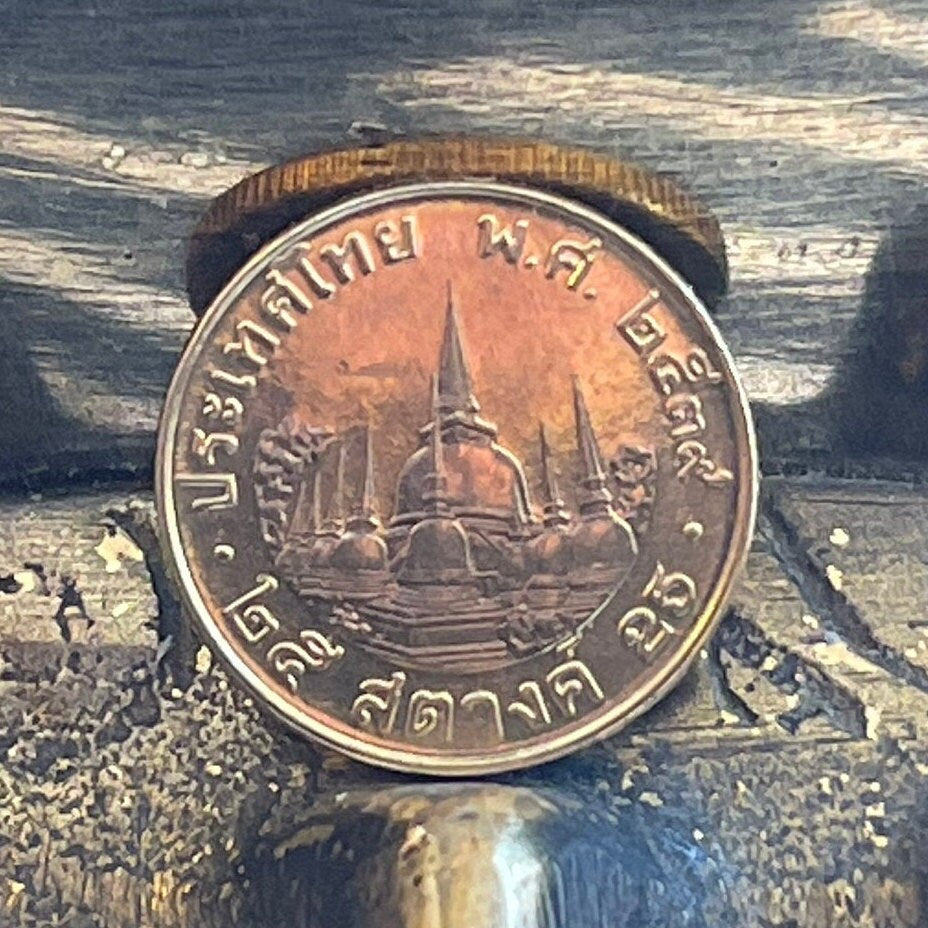
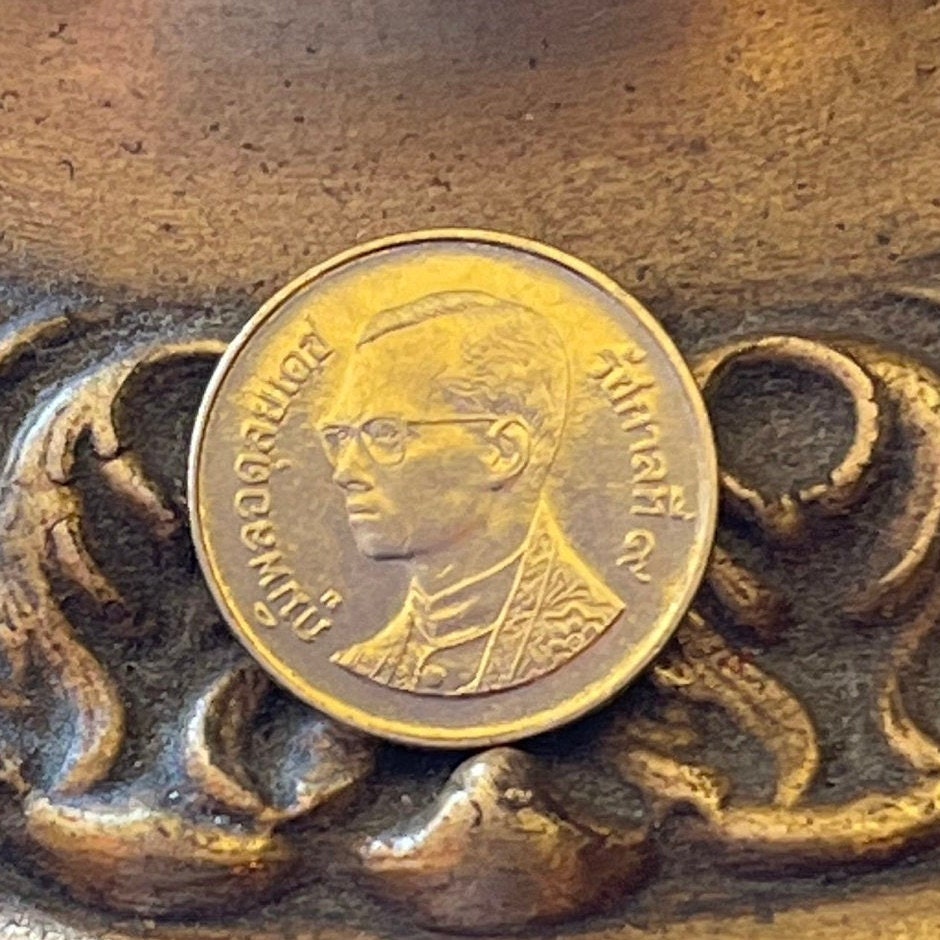
Items as described. Fast delivery.
Awesome coin ... Thank you !!
The seller is very attentive and the package is very good









